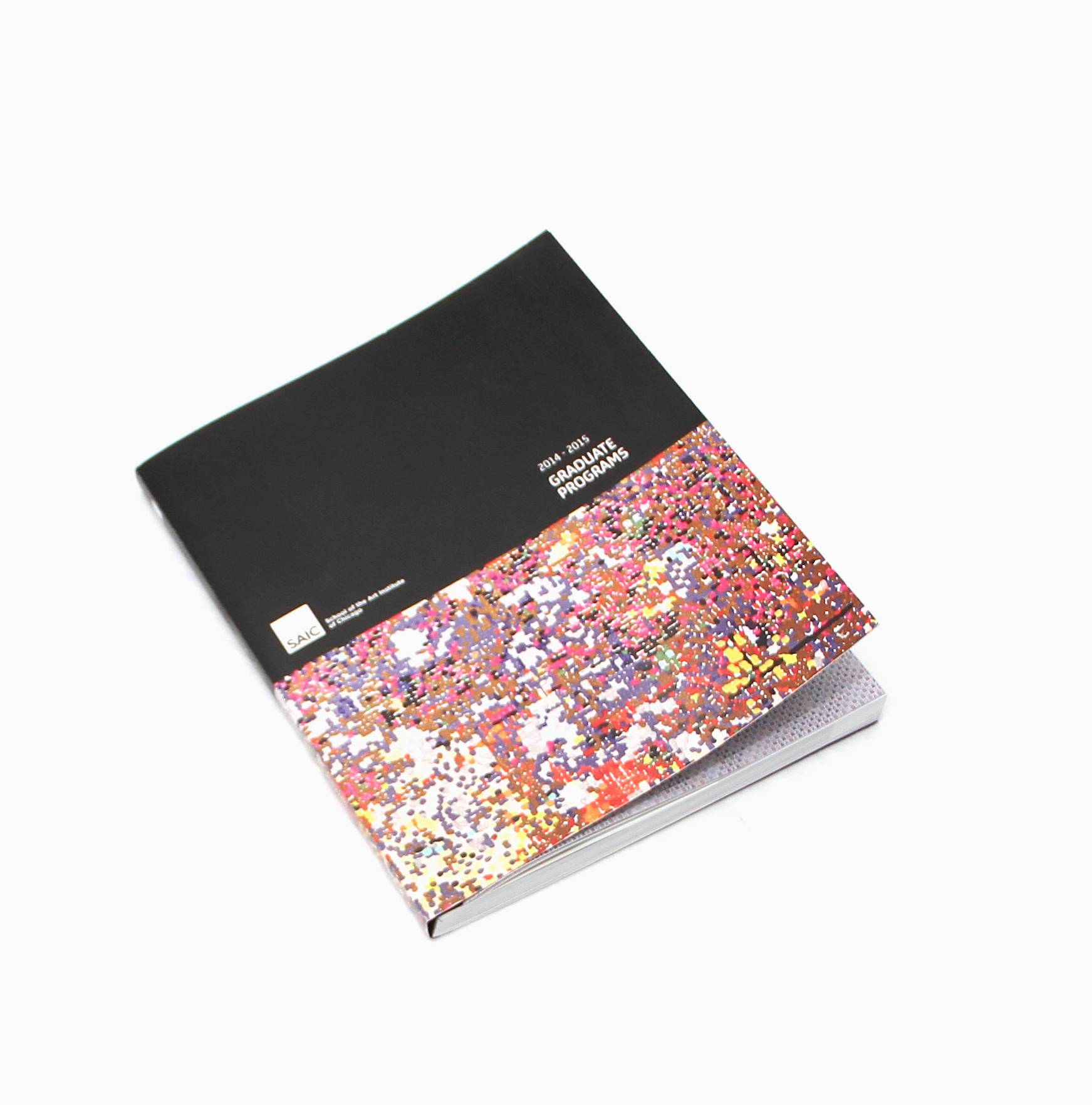Chinese Student Enrollment Continues to Rise at SAIC and Across the USA

For the first time in the history of the School of the Art Institute of Chicago (SAIC), enrollment from Chinese students overtook enrollment from South Korea, a student population which had previously been the school’s largest international demographic. But these figures raise a larger question. What makes a US education, and an education at an art school like SAIC, so appealing to international students? Currently there is more international enrollment at US universities than in any other country across the globe. Among these enrollments, the percentage of Chinese students is highest. Countless news media outlets like the Chronicle of Higher Education and organizations like the US nonprofit Institute of International Education (IIE) have noted over the past four years the number of students from mainland China enrolling in US institutions is rapidly increasing each year. IIE statistics show the steady growth of student enrollment from China in the US has, since 2009/2010, consistently outpaced international undergraduate and graduate enrollment rates from all other countries, even offsetting those of India and South Korea. The demographics of incoming international students at SAIC have also significantly shifted at both the undergraduate and graduate levels. Rose Milkowski, SAIC’s Vice President of Enrollment Management, said out of 2013’s incoming class of nearly 230 international undergraduate and graduate students, roughly 123 are from China, while nearly 98 hail from South Korea. David Murray, Assistant Director of International Affairs noted this shift does not come as a great surprise. In his view, enrollment levels between China and South Korea at SAIC have been close for some time, though “over the last three years … I first saw something like 35 students from China. The next year it was double that and then this year it hasn’t doubled, but it has gone up by a greater amount.” Research that was part of IIE’s “Open Doors” program reflects this. Of the 723,277 international students enrolled in US universities for the 2010/2011 academic year, 22% of these students were from mainland China. The following year this increased to 25%. Students from China now make up over a quarter of the international student population at US universities. On the other hand, South Korean enrollment has significantly dropped, which may be due to the fact that the nation has one of the world’s lowest birthrates. In 2010 it was 1.2%. This is expected to reduce the amount of students entering secondary education significantly. Education Minister Lee Ju-ho has said this may lead to a 40% drop in South Korean university enrollment over the next 12 years. It is expected that this will affect South Korean enrollment at SAIC as well. “If you look at trends of birth rates in South Korea, you will notice that the number of high school graduates is declining,” said Milkowski. “It’s something that everyone is aware of, but we will continue to recruit in Korea.” “The number of Chinese students has continued to grow proportionally, and that’s a world-wide thing,” said Milkowski. “China is starting to send more students out to other countries, and [SAIC has] seen an increase, as have other universities and institutions across the US.” Many observers insist this increase is due to a variety of factors. US-China Today relates it to the competitive nature of the the National Higher Education Entrance Examination or Gao Kao (高考), coupled with undeniably low admission rates for top universities within China. Marketing Manager Shaun Rein claimed in Forbes that US education has become desirable for Chinese students in contrast to what he perceives to be Chinese universities’ over-valuing of rote memorization as a learning skill. But these are speculations. SAIC administrators observe that nuanced and much more specific factors are influencing enrollment by students from mainland China.
Cheeyon Cha, SAIC’s Korean Student Adviser and Assistant Director of Student Affairs, said the #2 position of SAIC in US News and World Report’s Fine Art graduate program rankings is a “huge factor” in the appeal of the school to South Korean students and parents. That ranking is “one of the things that gives us significant name recognition and elevates us in terms of status in China,” said Milkowski. Though these rankings are for graduate programs, some administrators view them as reflective of the school’s overall reputation, which Murray attributes to SAIC’s interdisciplinary faculties, which serve both graduate and undergraduate students. Faculty at small, specialized schools must teach at all levels, he said, which “does speak well of the undergrad experience here.” Chinese student enrollment may also be affected by SAIC’s “tradition for over 10 years of recruiting in China,” according to Saksia Hoffman, SAIC Director of International Affairs. It’s one of the school’s initiatives to make SAIC “a truly international and global experience,” Milkowski said. SAIC primarily works with four schools in major Chinese cities like Beijing, Shanghai and Shenzhen to ensure that appropriate students are informed about SAIC’s facilities and programs. The school’s practices for fostering enrollment from China are the same as those for US universities. “What we do is a lot of interaction, going to top high schools, going into art classrooms, talking about [SAIC] and reviewing portfolios,” said Milkowski. Contrary to stereotypes about the financial wealth of international students from China, Hoffman said some Chinese families fund education before other priorities. Many Chinese students attending universities like SAIC do come from China’s contested and expanding middle-class and upper class, Hoffman said, “but you may also have students from middle-class families and working-class families where the parents did not attend universities.”The appeal of SAIC, like that of many US universities, to both domestic and international students, is not only the prestige of attending a top-ranked university. It also fits with the individual interests and tastes of its students, said Murray. He has noticed that it seems as if “specifically in China, there’s a right answer, there’s a right way to go to school and everyone is going for the top schools. Whereas here, there really is a more fine grain, distinctive fit for every student.” Chinese international students at SAIC agreed. For first year Arts Administration and Policy MA student Yiquing Li, prestige, networking opportunities, more expansive critical thinking skills and the physical site of Chicago were the most valuable assets the school offers. “Not only can I absorb knowledge,” Li said, “but I can also establish relationships with artists and other roles in the art world.” An important part of an education abroad for her is establishing relationships, both with artists and with professors, employers and colleagues for more social and employment opportunities. Li said the reputation in China of US universities is well established as providers of a liberal arts education that includes “critical knowledge and logic skills,” but she also said US universities do not allow for specialization in a field as much as some European countries do. An American liberal arts education is less focused, she said. Some students viewed the differences between art and design schools in China and the US as a matter of formalism versus creativity. Second year Visual Communication Design graduate student Chen Chen said, “Most Chinese art schools focus on professional training for students’ careers, which is good, but sometimes it’s missing the most important part in education.” They teach technical skills instead of “how to be more creative or how to think deeply,” said Chen. In the Visual Communication Design department, faculty are not only “giving you new ideas,” they also “raise your thinking to a theoretical level.” Graduate student and Hong Kong native Ange Wong attended a university in London before SAIC and agreed that higher education in the US is significantly more spread out over disciplines. But she also values the fact that SAIC is a more experimental and interdisciplinary institution than others she has experienced. Third year undergraduate Visual Communications student Rui Lou said the school’s professional image and the creative opportunities its facilities and programs offer are one of the reasons she chose SAIC. Judging from enrollment increases over the past four years, Chinese enrollment at universities across the US and at SAIC will continue to rise. Chen said the Chinese government has recently begun to issue scholarships for art and design students, stating that, “The government used to only sponsor students who came from science or economic-related majors, and the requirements for the applicants are quite harsh.” The Chinese state awards 200 scholarships for art and design students annually, significantly fewer than for students in other majors. According to Chen, the number of art and design students sponsored to study abroad by the Chinese government is even less. “Five students got the full-scholarship last year to study abroad like me.”






